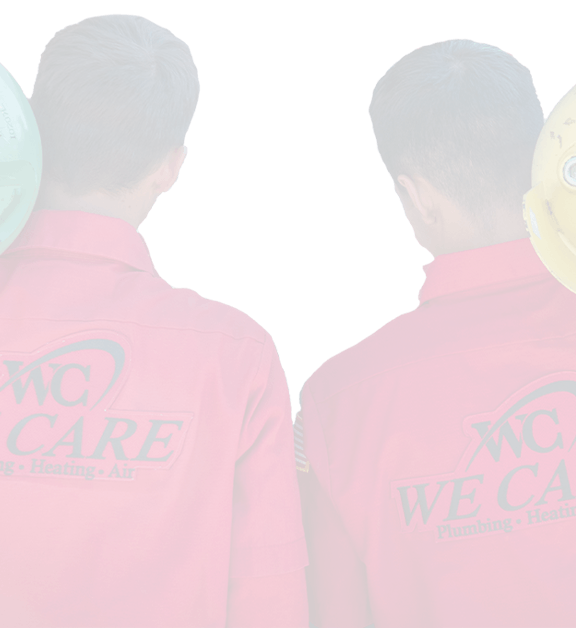Staying Up to Date on California’s Energy Efficiency Standards
What Is SEER?
Within the HVAC industry, the Seasonal Energy Efficiency Ratio (SEER) is a big deal. In short, it is a rating of how energy efficient appliances are. SEER ratings are determined by the Air Conditioning, Heating, and Refrigeration Institute (AHRI). The higher the SEER rating, the more energy efficient the appliance is.
One way to look at SEER ratings is to compare them to the miles per gallon a car gets. The higher the mpg, the more efficient the car’s design is.
Many state legislatures, including California’s, as well as the federal government, adopt standards for new appliance units being sold. In 2022, the minimum SEER rating for units sold in California is 14 SEER. In 2023, this minimum rating goes up to 15 SEER. The minimum SEER2 score will be 14.3. However, the SEER2 standards were only developed to be implemented in 2023, and we will discuss these in more detail later. These regulations are set to encourage the development and production of more energy-efficient appliances.
What Is SEER2?
SEER2 is an evolution in standards for HVAC energy efficiency. It has already been created and will be adopted in California and much of the country on January 1, 2023. The United States Department of Energy (DOE) sets standards for the calculation of appliance efficiency.
While the original SEER testing procedures to determine SEER ratings were already stringent, SEER2 sets out to correct some problems in the way that SEER ratings were originally determined.
SEER2 uses updated testing procedures that are made to reflect real-world conditions more accurately. Standards for air pressure, power, heating modes, and factoring in more complex pieces of machinery in test demands are all updated in SEER2.
Is the Industry Ready for SEER2?
According to initial surveys and reports by Emerson, the answer is that, by and large, the industry isn’t ready for this change. Keep in mind that the last major change to SEER ratings happened in 2015 when SEER requirements were bumped up. It is the first time in history that there has been such an upheaval of current policy to warrant another generation of SEER.
The surveys from Emerson that were conducted in 2022 reflect very poor compliance with SEER2 across the board. 93% of contractors who work with SEER-rated equipment said that they hadn’t done any research into these new SEER requirements. A whopping 70% of respondents to Emerson’s survey said that they had made zero changes to their operations based on anticipation of the new SEER2 standards. While operational changes aren’t enforced by regulatory agencies until the beginning of 2023, it’s critical that HVAC businesses familiarize themselves with the changes in SEER2 to be able to both interact with equipment in optimal manners and to be able to instill knowledge in their customers about the new standards.
More findings from Emerson’s surveys included that 30% of contractors had already had some form of staff training regarding SEER2 standards. Only 20% of those who responded to the survey had implemented any changes in their marketing to reflect compliance with and expertise in the new SEER2 standards.
Some concerns with SEER2 standards from Emerson’s research had to do with the anticipated cost of implementing them. About 50% of those who responded said they were concerned about needing to make new plans for their inventories. 39% of those who answered the survey said that they believed their businesses would need to pay significantly more for equipment once these regulations were adopted. Only 32% of those who responded said that they were very concerned about the higher costs they’re likely to face with SEER2’s widespread adoption.
How Much Is Efficiency Being Impacted by SEER?
Given that SEER2 is likely to increase the cost of appliances, many consumers wonder whether they will see the added benefit of better energy efficiency in exchange for these higher prices. According to AHRI, there should be approximately a 7% increase in energy efficiency.
AHRI reminded customers that, due to increases in manufacturing and development standards for HVAC equipment over the decades, equipment made now is between 30% and 50% more efficient than equipment put out in the mid-1970s.
How Do SEER2 Ratings Impact Me?
You may be wondering how these new standards will affect you as a consumer. As we’ve said, it’s likely that material prices for HVAC equipment will be higher. This is because the equipment must be held to a higher standard to be installed after the beginning of 2023.
For those located in California and the rest of the Southwest, the minimum SEER2 for any commercially available equipment will be 14.3. Those that don’t meet the new standards and ratings under the standards will be removed from commercial shelves. This will limit the number of competing brands but up the quality and energy savings value in the units available.
There may be a natural impulse to buy a less efficient machine that will probably be priced at high discounts before the end of 2022. This may work out, though you will not see the energy savings you would see in SEER2 2023-compliant machines. Those looking to sell their houses soon should be aware of the situation in 2006, when the Department of Energy raised the minimum SEER score from 10 to 13. Many homeowners chose to buy the much cheaper equipment scored at a minimum of 10. However, when they went to sell their homes, home inspections commissioned by potential buyers often revealed the lower score of the current appliances. Those potential buyers would then request that they be replaced before the sale. Sellers would usually cave, but they would lose the discount they won by securing the less efficient equipment before the higher requirement was instated.
What Factors Does SEER2 Not Account For?
SEER and SEER2 are quite useful, as they estimate the estimated energy savings by appliance unit. However, as far as air conditioning units go, there are some factors that SEER2 may not be able to fully calculate as part of its ratio.
SEER2 scores are more accurate for single-speed air conditioning machines. Most AC machines are single-speed and operate near full capacity the whole time they’re on. They shut off when the home has reached the cool temperature desired, then get triggered on when the temperature goes too high.
Two-speed AC machines are less common but more energy efficient. They have two settings, a low mode and a high mode. The low mode runs when the differential between the temperature on the thermostat and the cooling setting is fairly low. The high mode is triggered when that differential is higher. Having two modes helps to conserve energy by only running the mode that is necessary to get the desired temperature output.
Variable-speed AC units are the most efficient type of units. These machines only use the amount of power needed all the time. While SEER2 testing standards do take the types of equipment into account when calculating SEER, chances are that sticking with either variable AC or two-speed units will also yield you the efficiency you want.







